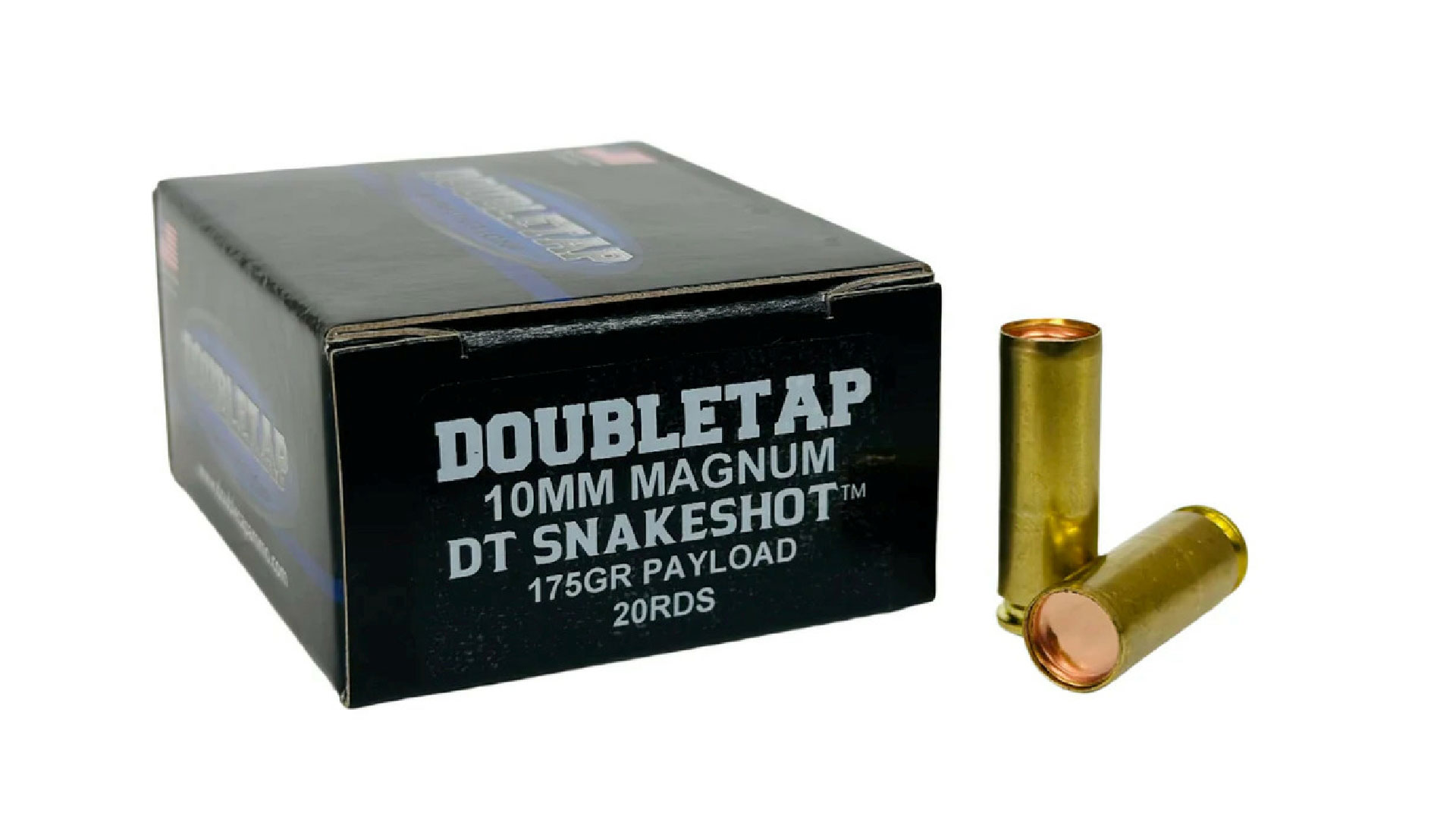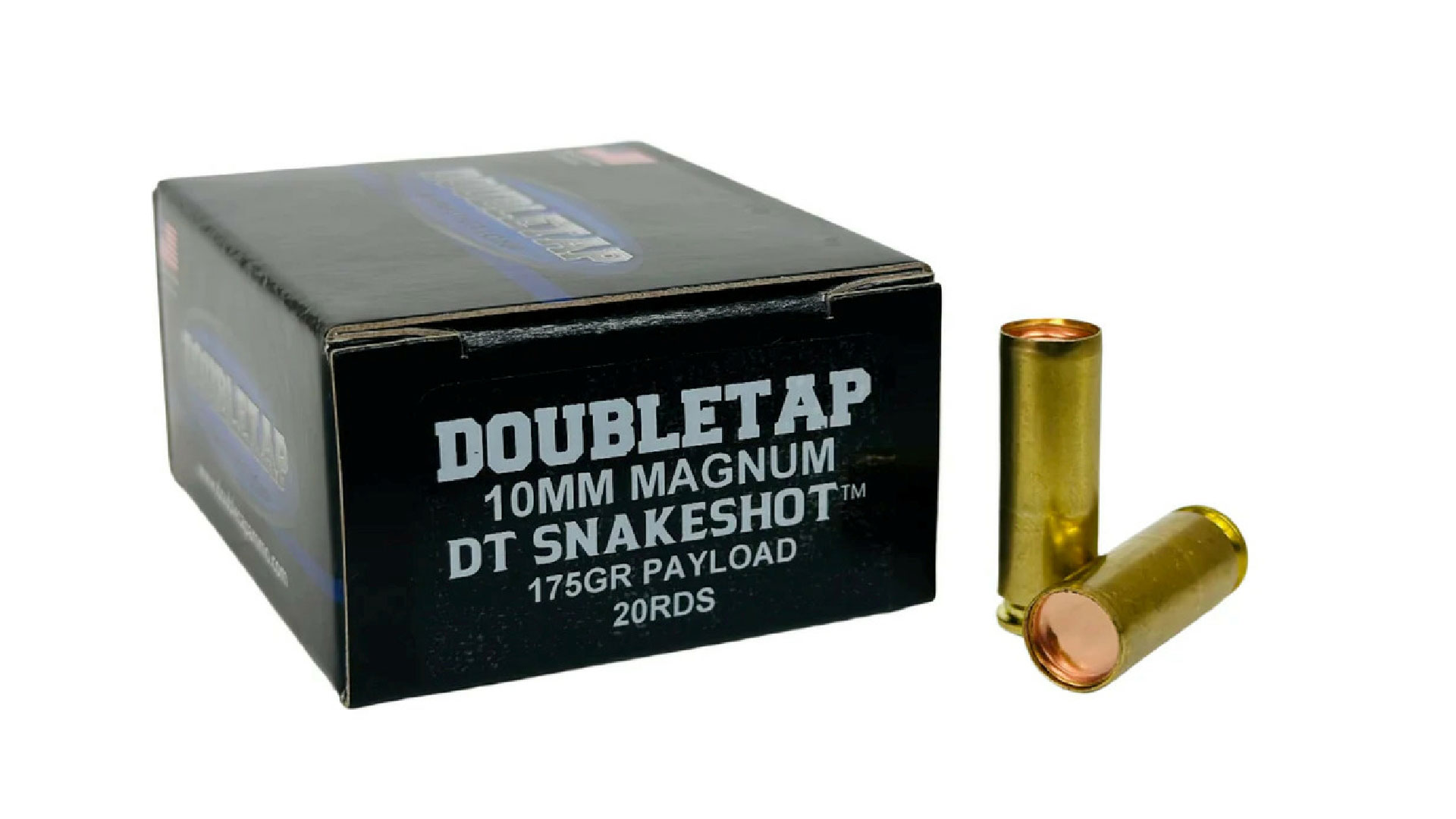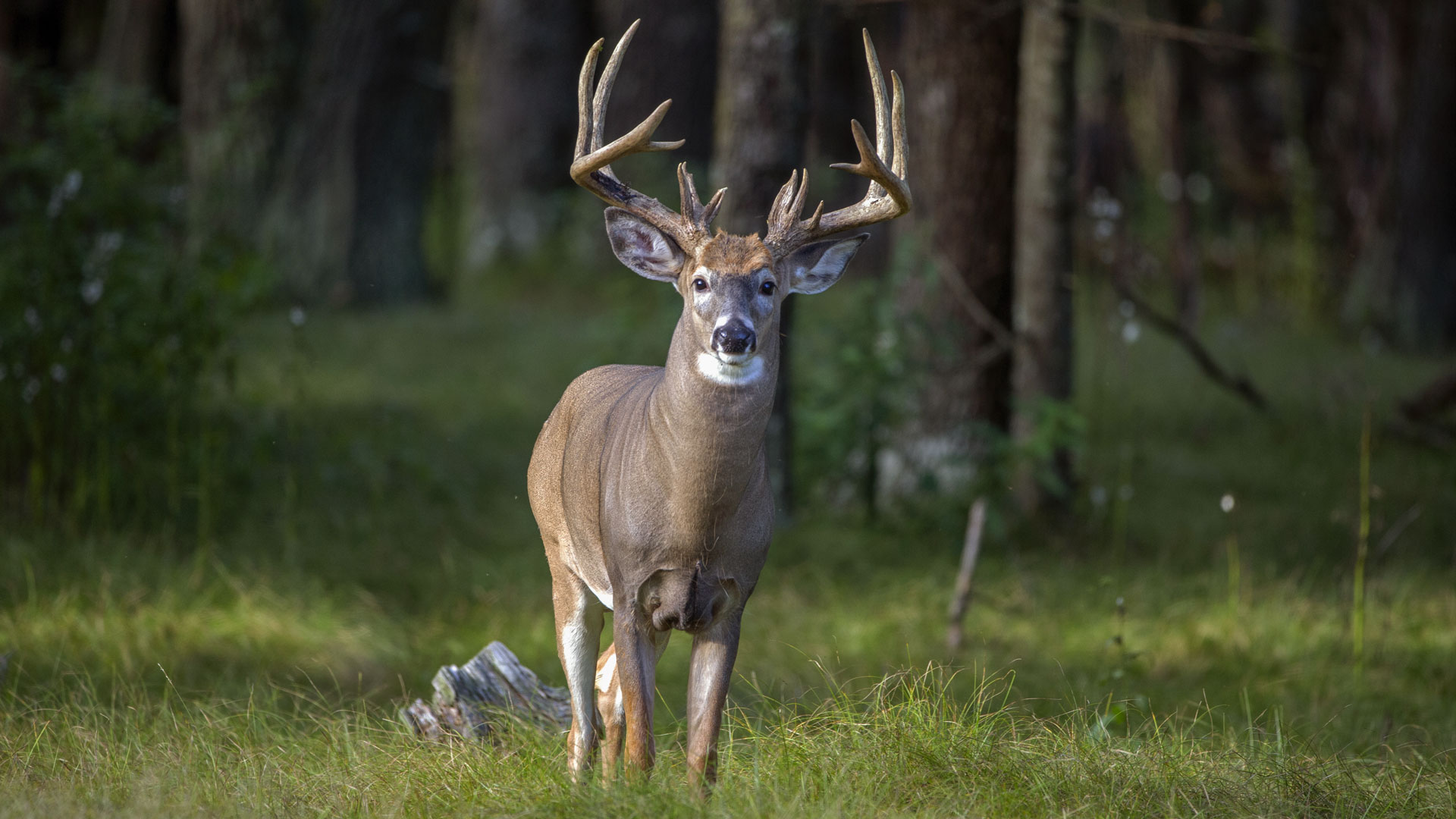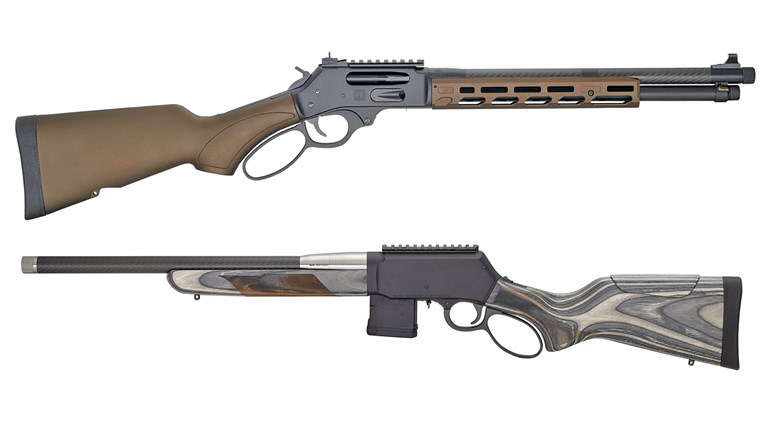
Truth be told, waterfowl or upland hunters—where required or desired—should select any non-toxic shot material over steel. Why? Steel’s low, 7.8-gram per cubic centimeter (g/cc) density is atrocious; in fact, it’s only about 70 percent as dense as lead. Therefore, its effective range is substantially shorter, and thus it requires self-control of the hunter to minimize the risk of uncollected, wounded waterfowl. Selecting larger pellets to offset the weight disparity—and therefore increase range—often results in void-filled patterns not conducive to bagging distant birds. Propelling steel pellets to high velocities helps, but it’s not enough to consider them extended-range loads.
A better choice is to opt for shotshells featuring bismuth (approx. 9.6-9.7 g/cc), Ballistic Products, Inc. (BPI) BPX Devastator or original HEVI-Shot (12.0 g/cc), BPI Sphero Tungsten Original-15 (15.0 g/cc) or tungsten super shot (TSS), which has an unmatched density of 18.0-18.1 g/cc. Given lead’s 11.35 g/cc density, the aforementioned shot types offer similar, if not vastly superior, downrange performance—even at extra-long range. As BPI’s Advantages Manual, 6th Ed. stated, “A premium [tungsten-based] pellet will be well worth the price when the birds become wary, the wind kicks up and the shooting ranges are stretching out to further distances.” But, they come at a high cost. Spending $2.00 to more than $5.00 per shell isn’t feasible for many, despite the returns they offer.

Believe me, I understand the plight of the cash-strapped hunter; as a late teenager, my friend and I had to pool our resources to purchase a single box of our then-preferred goose-getting shell, Winchester Drylok 12-ga. 3-inch featuring 1 3/8 ounces of No. 1 shot. It wouldn’t last long, but it did bring many birds to bag when they cooperated. When the belt tightened further, though, it was tough to even afford the economical Remington Sportsman Hi-Speed shells. We made do with steel, and so can you provided you pattern your shotgun and exhibit restraint in the field.
As with many things, steel shot-filled shells are available in standard (or economical) and “premium” variants. While the former is meant to simply fulfill a need and, generally, lacks extras, the latter serves to maximize the capabilities of the least-suitable, leadless shot-making material. The cost increase is marked; in fact, the per-shell price of some products isn’t much cheaper than loads featuring bismuth shot. Are they worth they elevated expense? Read on.

Steel Shot
Steel is steel, right? Wrong. While there are Sporting Arms and Ammunition Manufacturers’ Institute (S.A.A.M.I.) standards set for softness (accomplished through annealing), premium steel tends to exceed those standards and are impeccably polished and spherical in shape. Misshapen pellets tend to deviate to the fringe of the pattern, thereby enlarging it, and penetrate less deeply. Moreover, high-quality loads have pellets that are consistent in size. In other words, you purchase No. 2s and that’s what you get. Economical steel loads frequently have a great diversity of shot sizes; in fact, the worst offender I’ve encountered was advertised as having a blend of No. 1s and 2s, but dissecting several revealed that ranged from 0.189 inches (nearly BBB) to 0.136 inches (between No. 4 and 3). What’s more, of the aforementioned pellets few were absolutely spherical; rather, most were shaped like flying saucers, potatoes, egg, etc., or had varying sizes of appendages on them. Your shot shouldn’t appear like welding slag or an otherworldly spaceship, but it might in cut-rate loads. Those loads referenced above were marketed for goose hunting!
Premium steel shot tends to be plated with zinc or, less frequently, copper. While the latter can add a smidge of weight, the purpose of plating is to prevent rust. Most steel shot is treated to prevent rust; however, plating adds an extra measure of protection. Is it necessary? No, provided that the shells are cared for (i.e. not submerged in salt water in the bottom of a floating blind). As you can imagine, rusted pellets aren’t good for your shotgun. But, one has to wonder if what is used as a rust preventative on non-plated pellets will penetrate the meat you’ll eat.

Some top-tier steel loads have pellets with atypical designs to enhance their terminal effectiveness. Immediate to mind is Federal’s Flitestopper (FS) Steel and Winchester’s Hex Steel found in Black Cloud and Blind Side 2 shells, respectively. Constituting 40 percent of the pellets in Black Cloud loads, the pellets have a pronounced ring around the center, giving it a Saturn-like look. I’ve employed these on numerous waterfowl, as well as ballistic gelatin blocks, and there are undoubtedly larger wound channels when compared to ordinary steel, which tends to “ice pick” through. But, as mentioned elsewhere, the non-spherical pellets quickly migrate away from the pattern’s core. That’s why including 60-percent spherical steel is essential for engaging birds at-distance.

Winchester’s Hex steel fulfills dual roles. First, due to their shape, which facilitates better use of space within a shotcup, the payload can be increased while also maintaining solid velocities. For instance, Winchester can fit 1 3/8 ounces of shot in a 12-gauge, 3-inch shell and still propel it to 1,400 fps. Additionally, like FS steel, the Hex Steel Shot’s shape induces more trauma. Again, I’ve witnessed this while hunting ducks and shooting ballistics gel. While somewhat larger patterns can be expected, the shells still do well. The extra shot certainly helps fill holes.

Lastly, should you prefer a load employing two different sizes of steel, or what Remington refers to as “Duplex” loads, expect to pay a premium. Do they offer an advantage? Maybe. Maybe not. The merits and drawbacks can be argued ad nauseum, but fact remains, they’ll cost you more, so only you can decide if two is better than one.

Wads
Given steel’s hardness (at times as hard as, if not more so, than the barrel), a tough, protective wad is essential. All manufactures understand this; however, economical loads typically use traditional wad designs. Sure, they protect the barrel and choke tube while traversing them, as well as obturate to prevent gas blow-by and facilitate a clean release of the shot, but there is performance to be gained from atypical wads.

As an example, unlike conventional models, which effectively peel back or bloom to slow the wad and release the pellets, Federal’s Flitecontrol Flex uses a rear-braking design. Essentially, the petals are located on the rear of the wad and flare upon exiting the muzzle to slow its forward momentum. This, along with vents cut into the wall of the shotcup, facilitate a cleaner release of the shot (versus the agitation that sometimes accompanies traditional-type wads and can interrupt patterns). Whereas using the original Flitecontrol wad wasn’t recommended in ported or wad-stripping chokes, the newer variant can be used without issue.
Wads don’t have to deviate from the ordinary to be first-rate, either. For instance, Winchester’s Drylok dual-wad system improves its ability to avoid misfires—or outright duds—by preventing water from reaching the propellant. It also ensures that gas doesn’t bypass the wads for maximum velocities. Speaking of velocity, Remington’s unique Xelerator wads are critical to its HyperSonic Steel loads reaching 1,700 fps.
Finally, if you’re looking to reduce your footprint, opting for a non-plastic, biodegradable (and composable) wad will cost you extra—though not as much as you’d think. At the time of this writing, MidwayUSA was selling flats (250 rounds) of BioAmmo Game Steel and High Velocity Steel loads for $215. Not bad. And, besides the wad being compostable, so too is the hull; in fact, all of the components will degrade quickly and without harm to the environment.

Propellant
While companies often promote the “clean-burning propellants” used in their best steel loads, and I have witnessed the sheer dirtiness of some powders used in promotional (i.e. economy) shells, there are very few instances in which it honestly makes a real difference. Simply stated, if you’re using any shotgun other than a gas-operated semi-automatic, the propellant residue and other fouling are contained in the barrel and, at the conclusion of the hunt, should be removed when cleaning the gun for storage (temporary or long-term). It doesn’t impact their function.
On gas-operated shotguns, though, it could affect operation if you’re not properly maintaining your shotgun. Most gas-operated autoloaders nowadays have a quasi-self-cleaning system or other means to continue operating even when filthy, but that doesn’t mean you shouldn’t do preventative maintenance, as neglect leads to undue wear and ultimately, failure. Don’t blame it on “dirty powder.” All this to say, this shouldn’t be your primary deciding factor.

Hull and Primer
The hulls used in premium loads vary minimally from those found in economical fodder, and sometimes not at all. Usually, the biggest dissimilarity is found in the head, which is sometimes nickel-plated to increase corrosion resistance. Most steel loads—and other types, too—have brass-plated, steel heads. Unfortunately, steel heads corrode quickly when exposed to salt water (including brackish), so care must be taken to protect them; otherwise, they’ll be ruined in a surprisingly quick order. Nickel-plating helps, but it only buys you time. When hunting in harsh environments, ditch the paper boxes and opt for plastic cases, with the only shells needed at the moment being exposed. This’ll save you money in the long term—especially if you opt for the finest steel shell. As mentioned above, there are biodegradable, compostable hulls available in loads from BioAmmo.
All primers are paired with propellants (and other components) by ballisticians to achieve the desired results downrange and ensure safety. As long as they’re operational each and every shot, their composition matters little. Sealed primers, however, can help prevent moisture from reaching the propellant—nonessential, but a nice feature.

Velocity
As mentioned at the outset of this article, due to steel shot’s low density, an improvement in its lethality downrange requires an increase in pellet size and/or a boost in velocity. I’ve already mentioned the drawbacks of increasing pellet size, but detriments of excessive velocity shouldn’t be ignored, either. Advertising for some premium loads expound the virtues of ultra-high velocities, such as “reducing required lead” and “highest … downrange energies.” Usually a specific number is given of how much less you’ll have to lead the bird. Consider this for a moment; can you visually see a yard less lead, let alone inches, on a duck zipping perpendicular to you at 40-plus yards? I can’t, and most competitive clays shooters cannot either. It’s a fallacy to think that saving a few inches of lead can offset the detriments, such as severe recoil, which will induce fatigue, flinching, and extra abuse to your shotgun.
One could argue that the extra velocity increases on-target energy; however, steel pellets don’t deform on impact like lead. Instead, they ice pick through the quarry, so the additional speed isn’t particular helpful in that regard. You’ll find that slower loads tend to pattern better, too. Instead of punishing yourself and your gun, find a load with a velocity between 1,350 and 1,500 fps. or so and call it good. Splitting the difference is just about ideal.

When used at close to medium range, steel loads are perfectly capable of bagging waterfowl—as is evident by the abundance of birds brought home each season with their use. But, there are much better options, including stacked, dual-material loads that feature steel and bismuth or tungsten-based shot. If not using bismuth, my shotgun is full of steel/TSS “Duplex” handloads, which are terminally effective across a larger swath of shot distances. That being said, if you’re an ardent fowler who is on a tight budget, expends a lot of shells, and/or isn’t interested in handloading non-steel, leadless shot, then steel it is. Is “premium” steel worth the price? You must decide that.




































